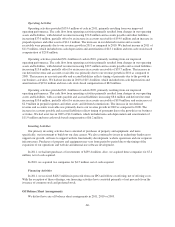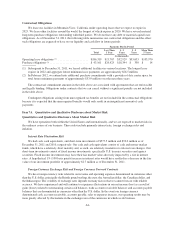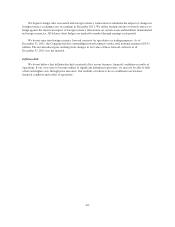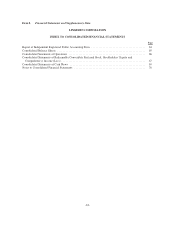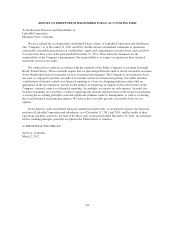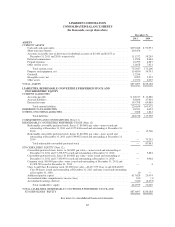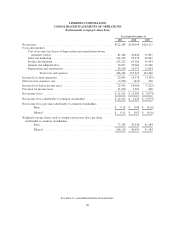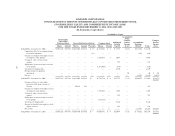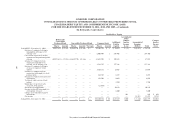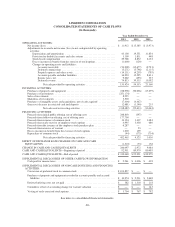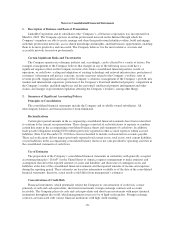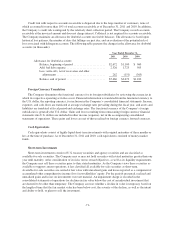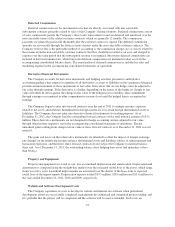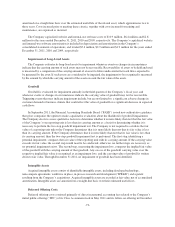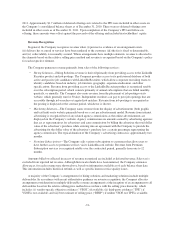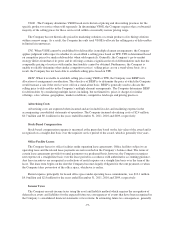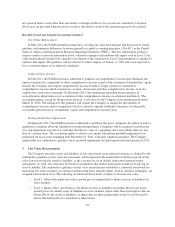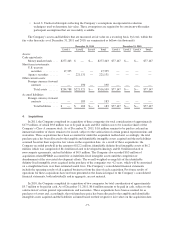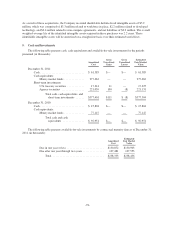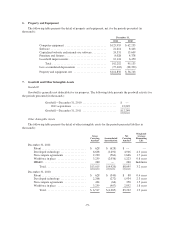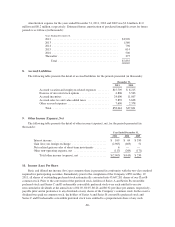LinkedIn 2011 Annual Report Download - page 74
Download and view the complete annual report
Please find page 74 of the 2011 LinkedIn annual report below. You can navigate through the pages in the report by either clicking on the pages listed below, or by using the keyword search tool below to find specific information within the annual report.Notes to Consolidated Financial Statements
1. Description of Business and Basis of Presentation
LinkedIn Corporation and its subsidiaries (the “Company”), a Delaware corporation, was incorporated on
March 6, 2003. The Company operates an online professional network on the Internet through which the
Company’s members are able to create, manage and share their professional identities online, build and engage
with their professional networks, access shared knowledge and insights, and find business opportunities, enabling
them to be more productive and successful. The Company believes it is the most extensive, accurate and
accessible network focused on professionals.
Certain Significant Risks and Uncertainties
The Company operates in a dynamic industry and, accordingly, can be affected by a variety of factors. For
example, management of the Company believes that changes in any of the following areas could have a
significant negative effect on the Company in terms of its future consolidated financial position, results of
operations, or cash flows: scaling and adaptation of existing technology and network infrastructure; protection of
customers’ information and privacy concerns; security measures related to the Company’s website; rates of
revenue growth; engagement and usage of the Company’s solutions; management of the Company’s growth; new
markets and international expansion; protection of the Company’s brand and intellectual property; competition in
the Company’s market; qualified employees and key personnel; intellectual property infringement and other
claims; and changes in government regulation affecting the Company’s business, among other things.
2. Summary of Significant Accounting Policies
Principles of Consolidation
The consolidated financial statements include the Company and its wholly-owned subsidiaries. All
intercompany balances and transactions have been eliminated.
Reclassifications
Certain prior period amounts in the accompanying consolidated financial statements have been reclassified
to conform to the current year presentation. These changes consisted of reclassifications to separate or combine
certain line items in the accompanying consolidated balance sheets and statements of cash flows. In addition,
trade payable obligations totaling $10.8 million previously reported in other accrued expenses within accrued
liabilities (Note 8) at December 31, 2010 have been reclassified to include such amounts in accounts payable.
These reclassifications did not impact previously reported total current assets, total assets, total current liabilities,
or total liabilities in the accompanying consolidated balance sheets or net cash provided by operating activities in
the consolidated statements of cash flows.
Use of Estimates
The preparation of the Company’s consolidated financial statements in conformity with generally accepted
accounting principles (“GAAP”) in the United States of America requires management to make estimates and
assumptions that affect the reported amounts of assets and liabilities and disclosure of contingent assets and
liabilities at the date of the consolidated financial statements and the reported amounts of income and expenses
during the reporting period. These estimates are based on information available as of the date of the consolidated
financial statements; therefore, actual results could differ from management’s estimates.
Concentrations of Credit Risk
Financial instruments, which potentially subject the Company to concentrations of credit risk, consist
primarily of cash and cash equivalents, short-term investments, foreign exchange contracts and accounts
receivable. The Company places its cash and cash equivalents and short-term investments with major financial
institutions throughout the world, which management assesses to be of high-credit quality. Foreign exchange
contracts are transacted with various financial institutions with high credit standing.
-70-


